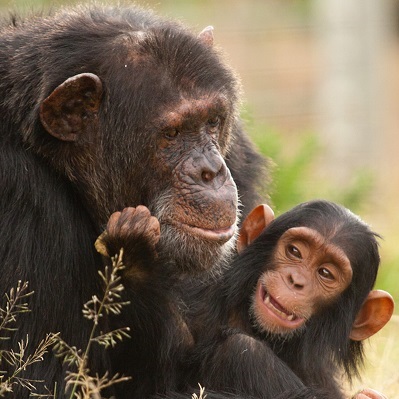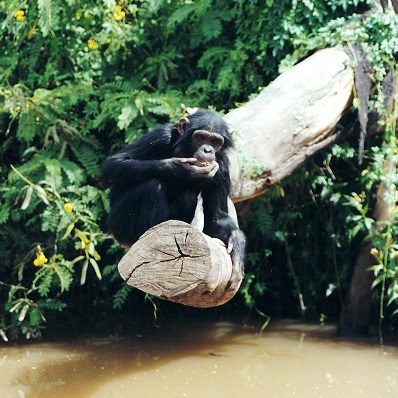It’s all in the genes
IT’S ALL IN THE GENES
Born Free recently received a sobering report from our partners in Guinea-Bissau who are working to conserve the 600-1,000 ‘critically endangered’ western chimpanzees in this small west African country. Western chimpanzee populations have fallen dramatically across their range due to habitat loss, disease outbreaks, hunting, and the lucrative illegal pet trade.
A serious threat to western chimpanzees is habitat fragmentation and conversion. Busy roads, mines, settlements and agriculture hinder movement, creating a mosaic of unsuitable habitat for species to live in or disperse across. These obstacles may be surmountable for a few, but most animals cannot and will not get past them, thereby isolating populations.
You may wonder how this relates to genetics. Isolated populations are more likely to be inbred (where closely related individuals have reproduced with each other), reducing genetic diversity, the driver of evolution. Our partner’s research confirmed that human-related barriers, such as roads and settlements, are preventing gene flow between chimpanzee populations in Guinea-Bissau. With such a small number of western chimpanzees left in the country, these barriers to dispersal may prove devastating.
There are two outcomes for a species when their populations decline; extinction or recovery. Population recovery, paradoxically, does not guarantee species survival. For example, only 20-100 northern elephant seals remained following rampant hunting in the 19th century. Now, due to conservation efforts and hunting legislation, the seal population has swollen to 100,000 individuals. However, every individual alive today has descended from the original 100, meaning they are all genetically very similar.
Ultimately, genetic diversity loss is damaging to the health of the species. The future of northern elephant seals is uncertain, and researchers are unable to predict how the population will fare against environmental stresses like pollution, disease, or coastal development. This isn’t an isolated case; the story is the same for cheetahs, southern white rhinos and California condors, to name but a few.
In another case, an isolated population of wolves in the United States of America became so inbred the animals developed an unusual arched posture and grew stubby tails, demonstrating genetic damage from low genetic diversity. Recovery may not be possible for this population.
What can be done?
Evidence suggests that due to an array of human induced pressures on mammals, it will take them millions of years to recover their genetic diversity.
Radical solutions have been proposed to save some species. For example, scientists are proposing to breed the Sumatran rhino with the Bornean rhino as neither sub-species has enough genetic diversity to support their longevity. Other species, including the Amur leopard, the Asiatic lion, the vaquita and kakapo, may simply have too few individuals to be viable.
For the western chimpanzee in Guinea-Bissau, ecological corridors created by planting forests, allowing for forest regeneration, or building wildlife crossings over and around developments will be critical in preventing a greater loss of genetic diversity.
A difficult question
These issues raise a serious concern; are humans acting as genetic masters and, if that is the case, should we try to save species that are genetically doomed or focus on species which are genetically viable? This question is difficult to answer. Certainly, humans have already altered the genetic course of millions of species but, how much further we intervene is up for debate. Some scientists have argued that saving a species which is already experiencing genetic damage is pointless, whilst others propose that each species extinction is a loss of ‘a branch of the tree of life’. The one argument that scientists do agree on, is that the world will be a poorer place if we continue to lose so many species.


